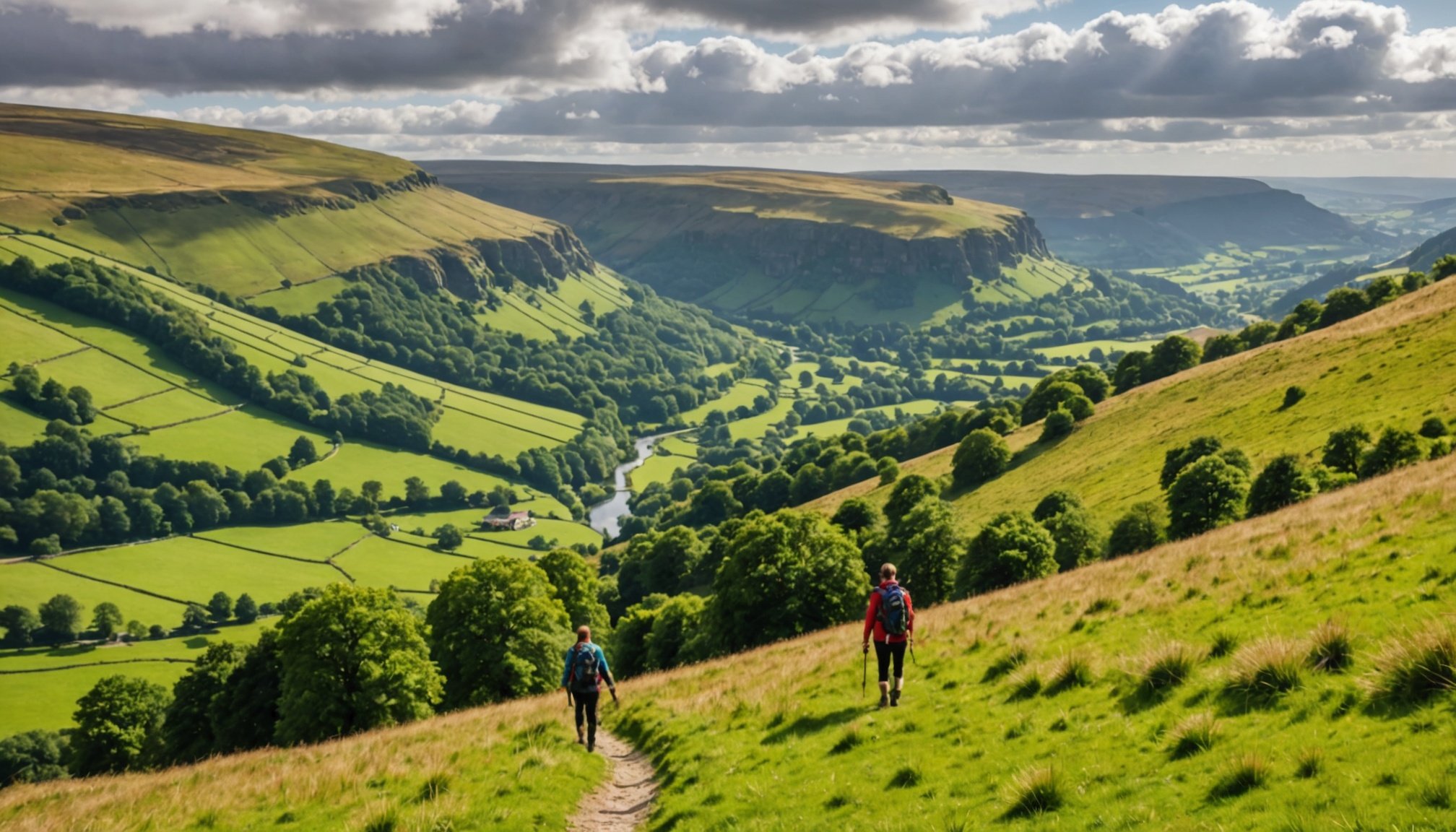Choosing Sustainable Gear
When embarking on a hiking adventure, selecting sustainable gear plays a crucial role in reducing your environmental footprint. Start by considering eco-conscious products crafted from recycled or ethically sourced materials. Look for brands that prioritise green hiking equipment, offering items like backpacks made from recycled fibres or water bottles composed of stainless steel.
When assessing sustainable gear, focus on durability. Long-lasting products not only save money but significantly reduce waste in landfills. To make informed decisions, seek certifications such as Fair Trade or Global Organic Textile Standard (GOTS), which attest to the product’s eco-friendliness.
Topic to read : Discover the Top Instagram-Worthy Hiking Paths in the Stunning Yorkshire Moors
Certain brands stand out for their commitment to sustainability. Companies like Patagonia and The North Face have a reputation for producing high-quality, eco-conscious products. Their gear includes jackets made from reclaimed fishing nets and boots with responsibly sourced rubber.
To further support the environment, maintain and reuse your hiking gear. Regularly clean and repair equipment to extend its life, minimising disposal. This simple practice not only cuts long-term costs but also keeps eco-friendly hiking a practical pursuit. Choosing the right gear aligns your hiking habits with broader environmental goals, benefiting both you and the planet.
Also to discover : Uncover Unforgettable Family Fun in the Brecon Beacons: Must-Try Activities for Every Adventurer!
Understanding Eco-Friendly Hiking Practices
Embracing eco-friendly hiking practices is essential for minimizing one’s impact on the natural environment. It involves conscientious behaviours that support the health of ecosystems, such as limiting trail erosion or preserving water quality. Sustainable practices are central to this approach, as they guide hikers in performing activities that safeguard the environment. One can start by abiding by the principles of environmental conservation.
Being mindful of simple actions like maintaining a safe distance from wildlife translates to protecting habitats. Furthermore, stay on designated paths, as this prevents unintentional damage to flora or fauna. Similarly, reducing noise pollution preserves calm for local wildlife, enriching your hiking experience.
Incorporating such practices not only preserves local ecosystems but also enhances trail maintenance. This practice secures habitats for future generations and promotes biodiversity, a key aspect of environmental conservation. By integrating these sustainable habits into your outdoor adventures, you contribute to a healthier planet, aligning your personal growth with the Earth’s well-being. The enhanced awareness allows hikers to enjoy nature responsibly while actively participating in the preservation of its splendour.
Minimizing Waste on the Trail
Respecting nature while hiking is crucial, and waste reduction is a vital component of this respect. The Leave No Trace principle serves as a foundational guideline for hikers, emphasizing the importance of leaving natural spaces as they were found. This principle encourages you to pack in what you pack out, ensuring all trash and waste are carried back with you.
Reducing reliance on single-use plastics is another effective strategy. Opt for reusable containers, utensils, and water bottles. This approach not only lessens waste but also aligns with the broader goals of trail etiquette, which focuses on minimizing human impact on the environment.
Consider these practical tips to further implement waste reduction:
- Plan meals carefully to limit wrappers and packaging.
- Use biodegradable soap to minimise pollution from cleaning.
- Dispose of human waste properly, following local guidelines.
Packing out every trace of your presence directly benefits the environment, ensuring trails remain pristine for future hikers. By integrating these sustainable practices into your hiking routine, you help maintain the delicate balance of ecosystems and contribute to environmental conservation. Such efforts enhance the hiking experience by preserving the beauty and integrity of the natural world.
Selecting Low-Impact Trails
Choosing low-impact trails is a crucial step in practicing environmentally responsible hiking. Such trails minimize your impact on delicate ecosystems while allowing you to enjoy the natural beauty. But what constitutes a low-impact trail? These are paths designed to withstand frequent use and are less vulnerable to erosion and biodiversity disturbances.
When researching trails, focus on those that highlight sustainable hiking routes. National parks and conservation organisations often provide insights into these options. Consider the trail’s management and maintenance efforts—well-maintained trails typically support environmental conservation.
Trail selection significantly impacts natural habitats and wildlife. By sticking to designated paths, hikers reduce their footprint on fragile environments, preventing damage to flora and fauna. This conscious choice contributes to preserving biodiversity and the balance of ecosystems.
For an immersive, eco-friendly experience, consult local conservation groups or park websites about trails that meet sustainable hiking criteria. Such paths ensure your adventures align with ecological goals while offering captivating landscapes to explore. By making thoughtful trail choices, hikers actively participate in conserving the expertise of nature.
Respecting Wildlife and Natural Habitats
Engaging in wildlife conservation during your hikes is crucial for the preservation of natural habitats. Observing animals from a distance ensures their safety, allowing them to thrive without human interference. This practice also provides hikers with the chance to witness wildlife behaviour naturally, enhancing the hiking experience.
To support habitat protection, it’s imperative to remain on marked trails. This commitment prevents damage to fragile ecosystems and preserves the unique flora and fauna of these areas. Adhering to these paths reduces the risk of soil erosion and maintains the integrity of the environment for future visitors.
As part of responsible hiking, understanding local regulations is key. These rules are crafted to protect the environment and require hikers to contribute positively to conservation efforts. Whether it’s respecting time restrictions in sensitive areas or following guidelines on waste disposal, compliance ensures the protection of natural wonders.
Hikers can engage with local conservation initiatives by volunteering or participating in awareness campaigns. Armed with knowledge and respect for nature, they play a vital role in supporting long-term ecological balance. Embracing these guidelines fosters a symbiotic relationship with nature, safeguarding its beauty for the future.
Transportation Tips for Eco-Conscious Travelers
When planning your hiking trip, considering sustainable transportation options can significantly reduce your carbon footprint. Opting for public transport or carpooling to trailheads is an effective way to minimise environmental impact. Public transport networks often provide routes directly to key hiking areas, making it a convenient and eco-friendly choice.
For those heading to the Peak District, investigate local bus and train services that cater to hikers. The area is well-connected, offering a plethora of eco-friendly travel options. Websites of local transport providers can be valuable resources in planning your journey, ensuring you begin your adventure sustainably.
Carpooling with fellow hikers not only cuts down emissions but also fosters a sense of community. Platforms facilitating ride-sharing can be helpful in arranging shared trips, making the journey both green and sociable. Before setting off, ensure all passengers are comfortable with the arrangement for a harmonious trip.
While planning, explore eco-conscious travel apps for real-time updates and navigation assistance. These tools support sustainable transportation by offering efficient, environmentally friendly routes, reinforcing the commitment to preserving the natural beauty you’re about to enjoy.
Eco-Friendly Accommodations and Dining Options
When traveling to the Peak District, choosing eco-friendly hotels is vital for an environmentally conscious visit. These accommodations focus on minimizing their carbon footprint by implementing sustainable practices such as using renewable energy, reducing water waste, and sourcing eco-friendly products. Staying at such hotels aligns with responsible tourism, ensuring your visit supports environmental conservation efforts.
While considering dining options, emphasize sustainable dining. Opt for restaurants that prioritize locally sourced, organic ingredients to lessen transportation emissions and support local farmers. Many eateries in the Peak District offer menus with seasonal produce, further enhancing your eco-conscious travel experience.
To make an impactful difference, supporting businesses engaged in sustainable practices extends beyond lodging and meals. Seek out local artisans and vendors committed to eco-friendly methods. This approach nurtures the local economy and advocates for greener business operations.
Remember, participating in responsible tourism corroborates local conservation efforts, benefiting the environment and future generations. By choosing eco-friendly accommodations and dining, you play a significant role in promoting a sustainable, environmentally responsible culture for your travel destinations.
Local Conservation Efforts and Resources
Engaging with local conservation initiatives enhances eco-conscious travel experiences. The Peak District offers several ongoing efforts dedicated to preserving its natural beauty. Organisations like the Peak District National Park Authority actively participate in maintaining and restoring ecosystems. They focus on projects that protect wildlife habitats, such as re-vegetation and waterway restoration.
Local resources play a crucial role in guiding efforts, offering valuable information on best practices for sustainable travel. Visitors can access visitor centres for advice on minimising impact during their stay. These centres often provide maps and guides tailored to eco-friendly exploration. They also connect travellers with activities supportive of conservation goals, from guided tours to volunteer opportunities.
To further nurture a conservation mindset, hikers can engage with initiatives by participating in local events or volunteer programs. These activities might include planting native trees, restoring footpaths, or monitoring biodiversity, aligning visitors’ interests with environmental needs.
Such engagements not only fortify the region’s ecological health but also cultivate a deeper connection to the land. By participating actively, travellers contribute to the resilience of the Peak District, ensuring its splendour endures for generations to come.










